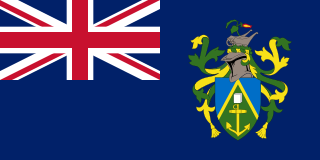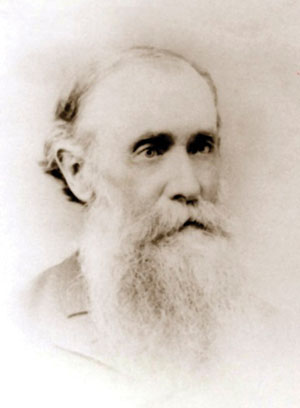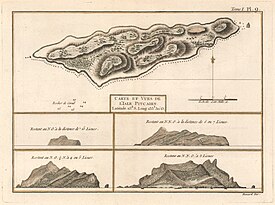
Norfolk Island is an external territory of Australia located in the Pacific Ocean between New Zealand and New Caledonia, 1,412 kilometres (877 mi) directly east of Australia's Evans Head and about 900 kilometres (560 mi) from Lord Howe Island. Together with the neighbouring Phillip Island and Nepean Island, the three islands collectively form the Territory of Norfolk Island. At the 2021 census, it had 2,188 inhabitants living on a total area of about 35 km2 (14 sq mi). Its capital is Kingston.

The Pitcairn Islands, officially Pitcairn, Henderson, Ducie and Oeno Islands, are a group of four volcanic islands in the southern Pacific Ocean that form the sole British Overseas Territory in the Pacific Ocean. The four islands—Pitcairn, Henderson, Ducie and Oeno—are scattered across several hundred miles of ocean and have a combined land area of about 18 square miles (47 km2). Henderson Island accounts for 86% of the land area, but only Pitcairn Island is inhabited. The inhabited islands nearest to the Pitcairn Islands are Mangareva, 688 km to the west, as well as Easter Island, 1,929 km to the east.
Norfuk or Norf'k is the language spoken on Norfolk Island by the local residents. It is a blend of 18th-century English and Tahitian, originally introduced by Pitkern-speaking settlers from the Pitcairn Islands. Along with English, it is the co-official language of Norfolk Island.

The history of the Pitcairn Islands begins with the colonization of the islands by Polynesians in the 11th century. Polynesian people established a culture that flourished for four centuries and then vanished. They lived on Pitcairn and Henderson Islands, and on Mangareva Island 540 kilometres (340 mi) to the northwest, for about 400 years.

Fletcher Christian was an English sailor who led the mutiny on the Bounty in 1789, during which he seized command of the Royal Navy vessel HMS Bounty from Lieutenant William Bligh.
Pitkern, also known as Pitcairn-Norfolk or Pitcairnese, is a language spoken on Pitcairn and Norfolk islands. It is a mixture of English and Tahitian, and has been given many classifications by scholars, including cant, patois, and Atlantic Creole. Although spoken on Pacific Ocean islands, it has been described as an Atlantic Creole due to the lack of connections with other English-based creoles of the Pacific. There are fewer than 50 speakers on Pitcairn Island, a number which has been steadily decreasing since 1971.
Meralda Elva Junior Warren is an artist and poet of the Pitcairn Islands, a remote British Overseas Territory in the South Pacific. She works in both English and Pitkern, the island's distinctive creole language. Her book, Mi Bas Side Orn Pitcairn, written with the island's six children, is the first to be written and published in both English and Pitkern. As an artist, she works with tapa cloth, a Polynesian tradition. She has also published a cookbook featuring Pitcairn Island cuisine.
Bounty Day is a holiday on both Pitcairn Island, destination of the Bounty mutineers, and on Norfolk Island. It is celebrated on 23 January on Pitcairn, and on 8 June on Norfolk Island, the day that the descendants of the mutineers arrived on the respective islands. It is named for HMS Bounty, although the ship never saw Norfolk Island.

The descendants of the Bounty mutineers include the modern-day Pitcairn Islanders as well as a little less than half of the population of Norfolk Island. Their common ancestors were the nine surviving mutineers from the mutiny on HMS Bounty which occurred in the south Pacific Ocean in 1789. Their descendants also live in New Zealand, Australia, and the United States.
There are two official languages of Norfolk Island, English and Norfuk. English, due to the influence of Great Britain and Australia, the two colonial powers who administered Norfolk Island, is the dominant language of the pair. Norfuk, a creole language based on English and Tahitian and brought to the island by the descendants of the Bounty mutineers from Pitcairn Island was spoken by 580 people according to the 1989 census. It is closely related to Pitkern spoken on Pitcairn Island. Many Norfolk Islanders also speak Fijian.
The British diaspora consists of people of English, Scottish, Welsh, Northern Irish, Cornish, Manx and Channel Islands ancestral descent who live outside of the United Kingdom and its Crown Dependencies.

Oceania is a region centered on the islands of the tropical Pacific Ocean. Conceptions of what constitutes Oceania vary, with it being defined in various ways, often geopolitically or geographically. In the geopolitical conception used by the United Nations, International Olympic Committee, and many atlases, the Oceanic region includes Australia and the nations of the Pacific from Papua New Guinea east, but not the Malay Archipelago or Indonesian New Guinea. The term is sometimes used more specifically to denote Australasia as a geographic continent, or biogeographically as a synonym for either the Australasian realm or the Oceanian realm.

John I. Tay was a Seventh-day Adventist missionary who was known for his pioneering work in the South Pacific. It was through his efforts that most of the inhabitants of Pitcairn Island were converted to Adventism, and that the General Conference of Seventh-day Adventists purchased the Pitcairn schooner for missionary work in the South Pacific.

Pitcairn was a schooner built in 1890 for the Seventh-day Adventist Church for use in missionary work in the South Pacific. After six missionary voyages, the schooner was sold in 1900 for commercial use, and renamed Florence S. She was lost by stranding on the island of Mindoro, Philippine Islands, on 17 October 1912.

The complement of HMS Bounty, the Royal Navy ship on which a historic mutiny occurred in the south Pacific on 28 April 1789, comprised 46 men on its departure from England in December 1787 and 44 at the time of the mutiny, including her commander Lieutenant William Bligh. All but two of those aboard were Royal Navy personnel; the exceptions were two civilian botanists engaged to supervise the breadfruit plants Bounty was tasked to take from Tahiti to the West Indies. Of the 44 aboard at the time of the mutiny, 19 were set adrift in the ship's launch, while 25, a mixture of mutineers and detainees, remained on board under Fletcher Christian. Bligh led his loyalists 3,500 nautical miles to safety in the open boat, and ultimately back to England. The mutineers divided—most settled on Tahiti, where they were captured by HMS Pandora in 1791 and returned to England for trial, while Christian and eight others evaded discovery on Pitcairn Island.
Same-sex marriage has been legal in the Pitcairn Islands since 14 May 2015. An ordinance to permit same-sex marriages was passed unanimously by the Island Council on 1 April 2015, and received royal assent by Governor Jonathan Sinclair on 5 May.
Rosalind Amelia Young was an historian from Pitcairn Islands.
Norfolk Islanders, also referred to as just Islanders, are the inhabitants or residents of Norfolk Island, an external territory of Australia. The Islanders have their own unique identity and are predominantly people of Pitcairn and English descent and to a lesser extent of Scottish and Irish.

Mauatua, also Maimiti or Isabella Christian, also known as Mainmast, was a Tahitian tapa maker, who settled on Pitcairn Island with the Bounty mutineers. She married both Fletcher Christian and Ned Young, and had children with both men. Fine white tapa, which was her specialty, is held in the collections of the British Museum and the Pitt Rivers Museum, amongst others.
Teio, also known as Te'o, Mary, and Sore Mummy, was a Tahitian woman who settled on Pitcairn Island with the Bounty mutineers. Alongside Mauatua and Teraura, she is one of the island's six original matriarchs.




















